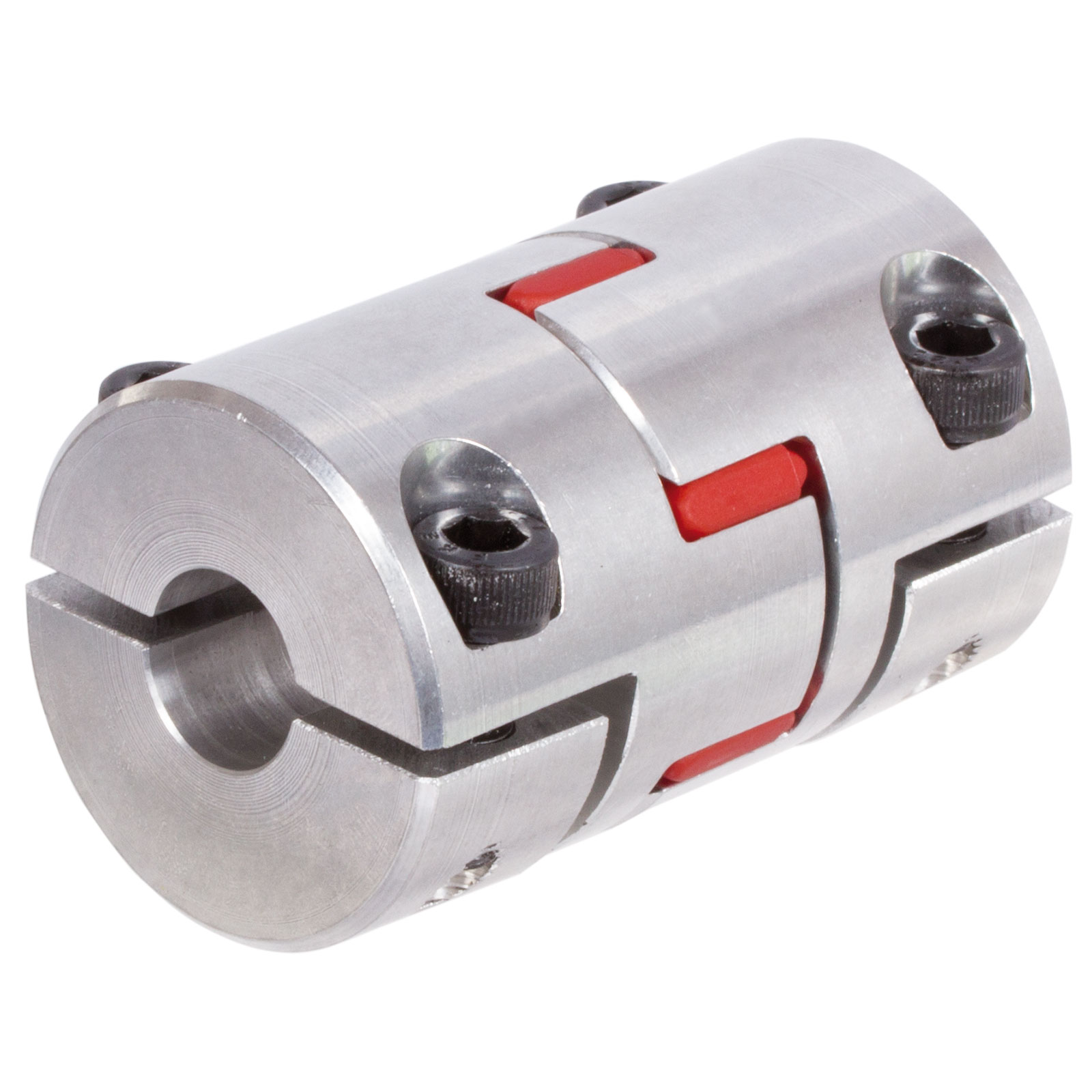Product Description
Precision Steering Shaft Double Hardy Spicer Cardan Moog Drive Car Jeep Truck Automobile Heavy Duty Small Axle Universal U coupling Joints
A universal joint, also known as a U-joint, is a type of coupling used to connect 2 shafts at an angle. It is typically used in applications where the 2 shafts are not aligned, such as in automotive drivetrains or industrial machinery.
The universal joint consists of 2 yokes (also called forks) and a cross-shaped member that connects the 2 yokes. The cross-shaped member has 4 bearing cups, each holding a needle roller bearing. The bearing cups are pressed into the yokes, then attached to the shafts to be connected.
As the shafts rotate, the universal joint allows for some degree of misalignment between them, while still transmitting torque from 1 post to the other. The needle roller bearings in the bearing cups allow for smooth and efficient rotation, even at high speeds.
Universal joints are available in several configurations, including single-joint, double-joint, and telescoping joint designs. They can also be made from various materials, including steel, aluminum, and plastic.
Overall, a universal joint provides a flexible and reliable way to connect 2 shafts at an angle to each other. Accommodating misalignment between the 2 shafts, it can help to reduce wear and tear on the equipment and improve overall system efficiency and reliability.

Material Selection and Design Durability of Elastic Couplings
The choice of materials for elastic couplings significantly influences their design and overall durability. Material selection affects factors such as flexibility, torsional stiffness, fatigue resistance, and resistance to environmental conditions. Here’s how material selection plays a crucial role:
- Elastomer Material: The elastomer used in elastic couplings determines the coupling’s flexibility, vibration absorption capabilities, and resilience. Common elastomers include natural rubber, synthetic rubber, and polyurethane. The selected elastomer should provide the desired level of elasticity and durability while maintaining its properties over time.
- Hub and Spacer Material: The hubs and spacers of elastic couplings are typically made from metals like steel, aluminum, or alloy materials. These components need to be strong enough to transmit torque while accommodating misalignments and vibrations. The material should also resist wear, corrosion, and fatigue.
- Bolt or Pin Material: Bolts or pins used to connect the hubs and elastomer element must possess sufficient strength to handle the torsional forces and loads. They should be made from materials with high tensile strength and corrosion resistance.
- Environmental Factors: Depending on the application environment, material selection should consider factors such as temperature, moisture, chemicals, and UV exposure. The chosen materials should be able to withstand these conditions without deterioration.
Ultimately, a well-considered material selection enhances the coupling’s durability, operational performance, and resistance to wear, ensuring that the elastic coupling can reliably function under varying conditions and loads.

Backlash in Elastic Couplings
Backlash refers to the amount of play or clearance between mating components in a mechanical system, particularly in elastic couplings. In an elastic coupling, backlash is the angular movement or rotation that occurs when there is a change in direction of the input shaft without an immediate response from the output shaft.
Backlash is a result of the elasticity and flexibility of the coupling’s components, such as the elastomer or other flexible elements. When the input direction changes, the elastic elements need to overcome their deformation before transmitting torque to the output shaft. This delay can lead to a temporary loss of motion and reduced precision in positioning applications.
Backlash can have a negative impact on the accuracy, repeatability, and overall performance of a machinery system. It can result in positioning errors, reduced responsiveness, and even potential damage to the system. Therefore, minimizing backlash is crucial in applications that require high precision and responsiveness.
Engineers can address backlash in elastic couplings by selecting couplings with lower compliance, optimizing the design to minimize the flexibility of the coupling elements, and using additional components like anti-backlash devices or preloaded mechanisms.

Benefits of Using Elastic Couplings in Industrial Machinery
Elastic couplings offer several advantages when used in industrial machinery:
- Misalignment Compensation: Elastic couplings can accommodate small angular, axial, and radial misalignments between connected shafts. This ability to compensate for misalignment helps prolong the life of machinery components and reduces the risk of premature wear.
- Vibration Damping: The elastic element in the coupling absorbs and dampens vibrations generated during operation. This feature improves the overall smoothness of machinery operation, reduces noise, and minimizes the transmission of vibrations to other parts of the system.
- Shock Absorption: Elastic couplings absorb sudden shocks or impacts that may occur during operation. By reducing the impact load on the connected components, the coupling helps prevent damage and extends the lifespan of the machinery.
- Reduced Maintenance: The flexibility and shock-absorbing properties of elastic couplings contribute to lower maintenance requirements. Machinery components experience less stress and wear, resulting in longer intervals between maintenance tasks.
- Protection of Equipment: Elastic couplings act as a protective barrier between connected machinery. They isolate vibrations and shocks, preventing these forces from propagating throughout the system and potentially causing damage.
- Improved Efficiency: By minimizing misalignment-related losses and reducing vibrations, elastic couplings contribute to improved machinery efficiency. This can lead to energy savings and better overall performance.
In summary, elastic couplings play a crucial role in enhancing the reliability, longevity, and efficiency of industrial machinery by addressing misalignment, dampening vibrations, absorbing shocks, and minimizing maintenance needs.


editor by CX 2023-08-18